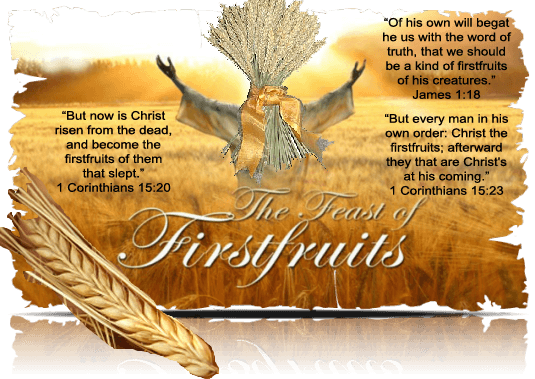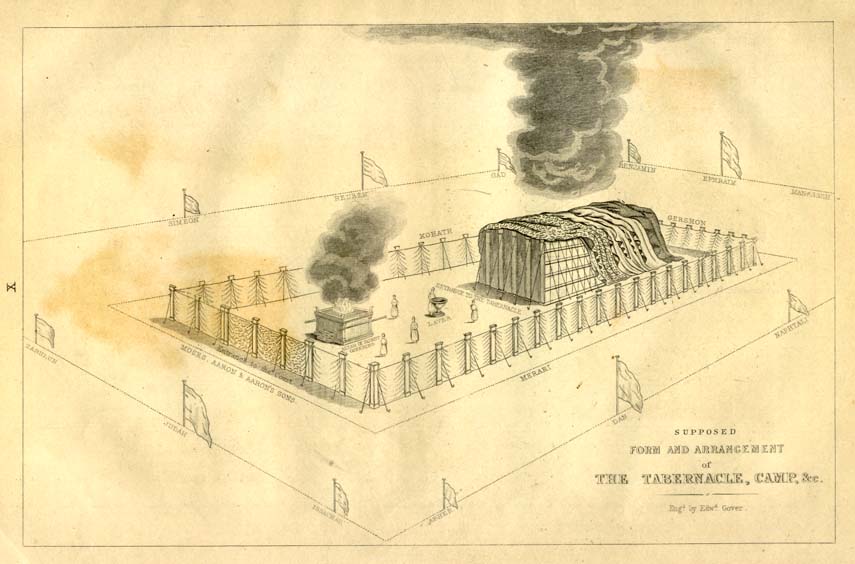~ Song of Solomon 2:9-13 ~
9 My beloved is like a gazelle or a young stag.
Behold, he stands behind our wall;
He is looking through the windows,
Gazing through the lattice.
10 My beloved spoke, and said to me:
“Rise up, my love, my fair one,
And come away.
11 For lo, the winter is past,
The rain is over and gone.
12 The flowers appear on the earth;
The time of singing has come,
And the voice of the turtledove
Is heard in our land.
13 The fig tree puts forth her green figs,
And the vines with the tender grapes
Give a good smell.
Rise up, my love, my fair one,
And come away!

Prophecy Watchers and The Pentecost Prophecy
“Pentecost is almost here. It takes place this Sunday, May 24th. King David was born and died on Pentecost. According to rabbinic tradition, Enoch was born and was raptured on Pentecost. The Church was born on Pentecost. Pentecost is known as “the festival without a date”—no man knows the day or hour! Jews believe that the “fruit of the trees” is judged on Pentecost. Hmm. They believe that on Pentecost the heavens open for a brief instant and that God answers prayer—in a moment, in the twinkling of an eye! The Dispensation of Law occurred on Pentecost. The Noahic Covenant was given on Pentecost. Ruth, a gentile bride, was chosen by Boaz on PENTECOST!!!
Will the rapture of the church occur on a future Pentecost? Will we be taken home on the church’s birthday? Of course this is only a suggestion. The rapture is imminent and could happen at any moment.
Gary has written a provocative article on this mysterious feast that is flush with Rapture symbolism—hidden within a Jewish celebration. Many people teach that Rosh Hashanah is the day the church will be raptured. Or the upcoming “Blood Moon.” Or the Feast of Tabernacles. Gary believes that Pentecost is a much better “potential” candidate. Pentecost is the day the Jews as they say, stay up all night and “decorate the bride!” You can’t make this up!
The Mystery of Pentecost
by: Gary Stearman on May 21, 2015
For more at Prophecy watchers just go to www.prophecywatchers.com Wouldn’t it be great to be raptured and wake up in heaven soon to start eternity?”
Gary Stearman: The Pentecost Prophecy (2015)
Gary’s Commentary on Pentecost (2015)
The Feast Of Pentecost
A Bible Study by Jack Kelley
Pentecost comes in the early summer (mid May-mid June). It’s the only Levitical Feast Day between the 3 Spring Feasts (Passover, Unleavened Bread, and First Fruits) and the 3 in the fall (Rosh Hashanna, Yom Kippur, and Tabernacles). The Hebrew name for this Day is Shavuot, which means weeks, so in Israel it’s often called the Feast of Weeks.
This is because it’s supposed to occur 7 weeks after the Feast of First Fruits (Lev. 23:15-16). Deut. 16:9 confirms this. “Count off seven weeks from the time you begin to put the sickle to the standing grain.” The first cutting of the grain took place on the Feast of First Fruits. Since First Fruits was the first day after the Sabbath that follows Passover, it was always observed on a Sunday. Shavuot, being 7 weeks later, was always on a Sunday, too, and celebrated the beginning of the summer harvest.
But in 140 AD, following the final defeat of the Jewish nation after the bar Kochba revolt of 135 AD, the Sanhedrin changed the focus of Shavuot from the summer harvest to the giving of the Law. They did this because Shavuot was one of the three feasts all Jews were required to observe (Exodus 23:14-17 tells us Unleavened Bread and Tabernacles were the other two) and the defeated and dispersed nation would no longer have any national harvests to celebrate. From that time on, the count down began from the first day of the Feast of Unleavened Bread, the day the Israelites left Egypt. So now Shavuot can come any day of the week and takes place on the 6th day of the Hebrew month called Sivan, which is the traditional day Moses received the Law from the Lord. Making this change placed the giving of the Law at Mt. Sinai exactly seven weeks after the Exodus from Egypt and preserved the Feast of Weeks in Jewish life.
Christians call this day by its Greek name, Pentecost, from a Greek word that means “50 days”. There were 50 days from the Sabbath that followed Passover to the Feast of Pentecost, and that’s where the Greek name comes from.
Early Christians also changed the way the various dates are determined, although we’ve retained the Sunday requirement for Pentecost. Christians now start counting on the day we call Easter Sunday, which is officially the first Sunday after the first full moon that follows the Spring Equinox. We count Easter Sunday as day one, so Pentecost is always 49 days after Easter and always comes on a Sunday. By counting Easter Sunday on both ends of the span we can arrive at 50 days (Pentecost) and still keep the celebration on the 7th Sunday after Easter.
I know all this is really confusing, but the bottom line is that in 2014 the Jewish observance will take place on Wednesday June 4 and Christians will celebrate it on Sunday June 8.
What’s a Pentecost?
As I said, Jews now celebrate Pentecost (I’ll just use its Greek name to avoid any more confusion than necessary) as the day Moses received the Law on Mt. Sinai and the nation of Israel was born (Exodus 19-20). Christians celebrate it as the day the Holy Spirit came upon the Disciples in Jerusalem and the Church was born (Acts 2). If you agree with my view that the parables of Matthew 13 describe the Kingdom of Heaven during the Church Age and that the parable of the yeast (Matt. 13:33) predicts the Church will be filled with sinners, you’ll be interested in the fact that unlike all the other Jewish Feasts that call for unleavened bread (no yeast), Pentecost calls for two loaves of bread baked with yeast (Lev. 23:17). In the Bible leaven, or yeast, is a model of sin because it causes the dough to begin spoiling.
Other Jewish Pentecost ceremonies also reveal a subtle link to the coming church. In synagogues, the Book of Ruth is read on Pentecost. The story of Ruth has been called “The Romance of Redemption”. It’s about Naomi, a Jewish woman from Bethlehem who lost her land due to a famine in Israel and was forced to flee into neighboring Moab (Jordan), where there was no famine. Shortly thereafter her husband passed away leaving her penniless and alone in a foreign country.
After the famine ended, she returned to Bethlehem accompanied by Ruth, a gentile woman who had sworn never to leave her. Ruth was a Moabite who had married one of Naomi’s sons (who also died) making her Naomi’s daughter-in-law and a destitute widow as well.
Once back in Bethlehem Naomi’s close relative, a prominent Jewish man named Boaz fell in love with Ruth and married her. In the process he also regained Naomi’s land as her kinsman redeemer. Both these events were accomplished according to the Law. For Naomi it was the law of redemption (Lev 25:25), and for Ruth it was the law of leverite marriage (Deut. 25:5-6).
The modeling here is dramatic, with Naomi in the role of Israel, destitute and alone; Ruth as the Church, the gentile bride; Boaz as the Messiah, and the story itself as a prediction of the relationship that would involve all three of them. In the process of redeeming Israel, the Messiah takes a gentile bride. In doing so, He saves both from their destitute condition and restores Israel’s Land. The identification of the Church with Pentecost began in the prophecies of Ruth. To learn more about these incredible prophecies, and enjoy one of the world’s classic love stories, read Ruth’s Story.
By the way, Boaz was the son of Rahab, the harlot from the Book of Joshua (read “The Gospel in Joshua … The Story of Rahab” ), and 3 generations later his great-grandson David became the King of Israel. Rahab and Ruth are both listed in the genealogy of the Lord Jesus (Matt. 1:5), and King Solomon named one of the pillars at the entrance to the Temple after his ancestor Boaz.
When’s Your Birthday?
By tradition Enoch, one of the patriarchs from Genesis 5, was born on the day later to be known as Pentecost. Enoch’s name means “teaching”, a primary function of the Church (Matt. 28:19-20) For this reason many scholars see him as a “type” of the church as well. Genesis 5:21-23 indicates that Enoch had a close relationship with God and was actually taken live (raptured) into Heaven before the Great Flood. Pre-Trib scholars see this event as one of several Old Testament hints that the Church will disappear from Earth before the Great Tribulation.
These same traditions also hold that Enoch was taken on his birthday. So here’s a man identified with the Church being born and raptured on the day that would become Pentecost, the day the church was born. Will the Church be raptured on our birthday too? Personally I don’t believe the Rapture of the Church will be the prophetic fulfillment of any of Israel’s Holy Days. But if I’m wrong and the Rapture does fulfill a Jewish Feast, Pentecost is by far the most obvious candidate.
As you probably know, I believe the reason no one on Earth can accurately predict the day of the Rapture is because it’s a number specific event, not a date specific one. In Romans 11:25 Paul implied the church has a “full number”, when its ranks will be considered complete. When that number is reached the Church will “come in” which means it will arrive at its scheduled destination, like when a ship “comes in.” Jesus said the destination of the Church is His Father’s house (John 14:2). Put it together and I believe it means we’ll be raptured as soon as the pre-determined number of Christians has been born again, no matter what day it happens to be.
Soon And Very Soon
One day soon now, all who are in Christ, having heard and believed the Word of Truth, the Gospel of our salvation (thereby receiving the seal of the promised Holy Spirit) will suddenly disappear from the face of the Earth along with all children and others who are intellectually incapable of making informed choices about their eternal destiny. In one instant we will have been going about our daily routines on Earth and in the next we’ll be standing in the presence of our Redeemer, our sins forgiven and forgotten, and all our imperfections gone. Among us will be all the faithful dead of the Church Age, reunited with perfected bodies and restored to eternal physical life. Together we will begin the most incredible journey of exploration and realization ever dreamed of, and it will last forever.
Neither we, nor the unbelieving world, will have received any advance warning of the timing for this event; it will have come totally by surprise. Maybe it will happen on Pentecost, maybe not. But one thing is certain, when it does happen, none of us will care one bit whether we had predicted it’s timing accurately. We will only express in unimaginable joy our gratitude for being there. For it is by grace you have been saved through faith – and this not from yourselves, it is the gift of God – not by works, so that no one can boast. (Ephe. 2:8-9)
As it is written: No eye has seen, no ear has heard, no mind has conceived what God has prepared for those who love Him – but God has revealed it to us by His Spirit. (1 Cor. 2:9-10). You can almost hear the footsteps of the Messiah.
Ruth’s Story
By: Jack Kelley
Chapter 1
My name is Ruth. The story I’m about to tell you is true. All of its characters are real people who really did the things I’ll describe. I mention this at the outset because over the generations my story has so clearly predicted the relationships between Israel, the Church, and the Messiah that many who study it forget that it really happened. That fact that my story was once included among the books of the Prophets of Israel and even today is read in synagogues around the world on Pentecost has added to its mystique. Like several other biblical events, it’s a true story that can also be viewed allegorically. Here’s how it happened…MORE at the highlighted link above
Also of interest is Nasso or; “taken up” or “lift up” (see the highlighted link just below)
Naso (parsha)
” Naso or Nasso (נָשֹׂא — Hebrew for “lift up,” the sixth word, and the first distinctive word, in the parashah) is the 35th weekly Torah portion (פָּרָשָׁה, parashah) in the annual Jewish cycle of Torah reading and the second in the book of Numbers. It constitutes Numbers 4:21–7:89. Naso has the largest number of letters, words, and verses of any of the 54 weekly Torah portions. The parashah is made up of 8,632 Hebrew letters, 2,264 Hebrew words, and 176 verses, and can occupy about 311 lines in a Torah Scroll (סֵפֶר תּוֹרָה, Sefer Torah).[1]”
“Jews generally read it in late May or June, typically on the first Shabbat after Shavuot.” Click THIS LINK for dates of the reading each year.

